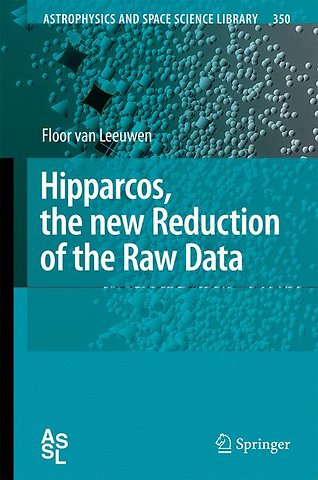Hipparcos, the New Reduction of the Raw Data
Gebonden Engels 2007 2007e druk 9781402063411Samenvatting
This book provides overviews of the new reduction as well as on the use of the Hipparcos data in a variety of astrophysical implementations. A range of new results are included. The Hipparcos data provide a unique opportunity for the study of satellite dynamics as the orbit covered a wide range of altitudes, showing in detail the different torques acting on the satellite.
Specificaties
Lezersrecensies
Inhoudsopgave
Part I The Hipparcos mission. 1. THE HIPPARCOS MISSION. 1.1 Overture. 1.2 The mission. 1.3 The published data. 1.4 Concepts of the new reduction. 2. HIPPARCOS ASTROMETRY 2.1 From positions and velocities to astrometric data. 2.2 The Hipparcos astrometric data 2.3 Reconstruction of the along-scan rotation phase. 2.4 Grid distortions 2.5 Astrometric-parameter solutions.
Part II Exploring the Hipparcos astrometric data. 3. INDIVIDUAL, SINGLE STARS. 3.1 Precisions and accuracies. 3.2 Correlations. 3.3 Parallaxes. 3.4 Proper motions. 3.5 Disturbed solutions. 3.6 Comparison with the ICRS. 4. THE ASTROMETRIC DATA FOR COMPOSITE IMAGES AND ORBITAL BINARIES. 4.1 The modulated signal for small-separation double stars. 4.2 Astrometric parameters for double stars. 4.3 Double stars with two catalogue entries. 4.4 Variable-brightness of one component. 4.5 Multiple systems. 4.6 Orbital motions. 5. GROUPS OF SINGLE STARS. 5.1 Solving for common parameters. 5.2 Application to star clusters. 5.3 Calibrating luminosities. 5.4 Conclusions. 6. KINEMATICS OF THE SOLAR NEIGHBOURHOOD. 6.1 Systematic motions. 6.2 The distribution of nearby stars.
Part III Hipparcos Photometric data. 7 THE PHOTOMETRIC DATA. 7.1 The Hipparcos photometric pass bands. 7.2 Formal errors and variability indicators. 7.3 Variability analysis. 7.4 Newly discovered variables.
Part IV Hipparcos attitude modelling. 8. A FREE­FLOATING RIGID BODY IN SPACE. 8.1 Dynamics of a rigid body in space. 8.2 The internal torques and inertia tensor. 8.3 External torques acting on the satellite. 8.4 Non-rigidity. 9. THE TORQUES ON HIPPARCOS AS OBSERVED OVER THE MISSION. 9.1 Relation between attitude and torque reconstruction. 9.2 Solar radiation torques. 9.3 Magnetic torques and the remaining torque variations. 9.4 Predictability of the environmental torques. 10. FULLY-DYNAMIC ATTITUDE FITTING. 10.1 Outline of the method. 10.2 The integration engines. 10.3 Implementing the gyro data. 10.4 Implementing the star mapper data. 10.5 Implementing the Image Dissector Tube (IDT) transit data. 10.6 Conclusions. Part V Summary of calibration results. 11. THE MISSION TIMELINE. 11.1 Trend analysis and anomalies. 11.2 Data coverage and detector response. 12. PAYLOAD CALIBRATIONS. 12.1 The optical transfer function. 12.2 Large-scale geometric-distortion calibration. 12.3 Photometric calibrations. 13. SPACECRAFT-PARAMETER CALIBRATIONS. 13.1 The on-board clock. 13.2 Gyro characteristics. 13.3 Thruster firings and the Centre of Gravity.
Part VI The next generation. 14. GAIA. 14.1 Introduction. 14.2 The spacecraft and payload. 14.3 The mission plan. 14.4 The astrometric data reduction.
Rubrieken
- advisering
- algemeen management
- coaching en trainen
- communicatie en media
- economie
- financieel management
- inkoop en logistiek
- internet en social media
- it-management / ict
- juridisch
- leiderschap
- marketing
- mens en maatschappij
- non-profit
- ondernemen
- organisatiekunde
- personal finance
- personeelsmanagement
- persoonlijke effectiviteit
- projectmanagement
- psychologie
- reclame en verkoop
- strategisch management
- verandermanagement
- werk en loopbaan

